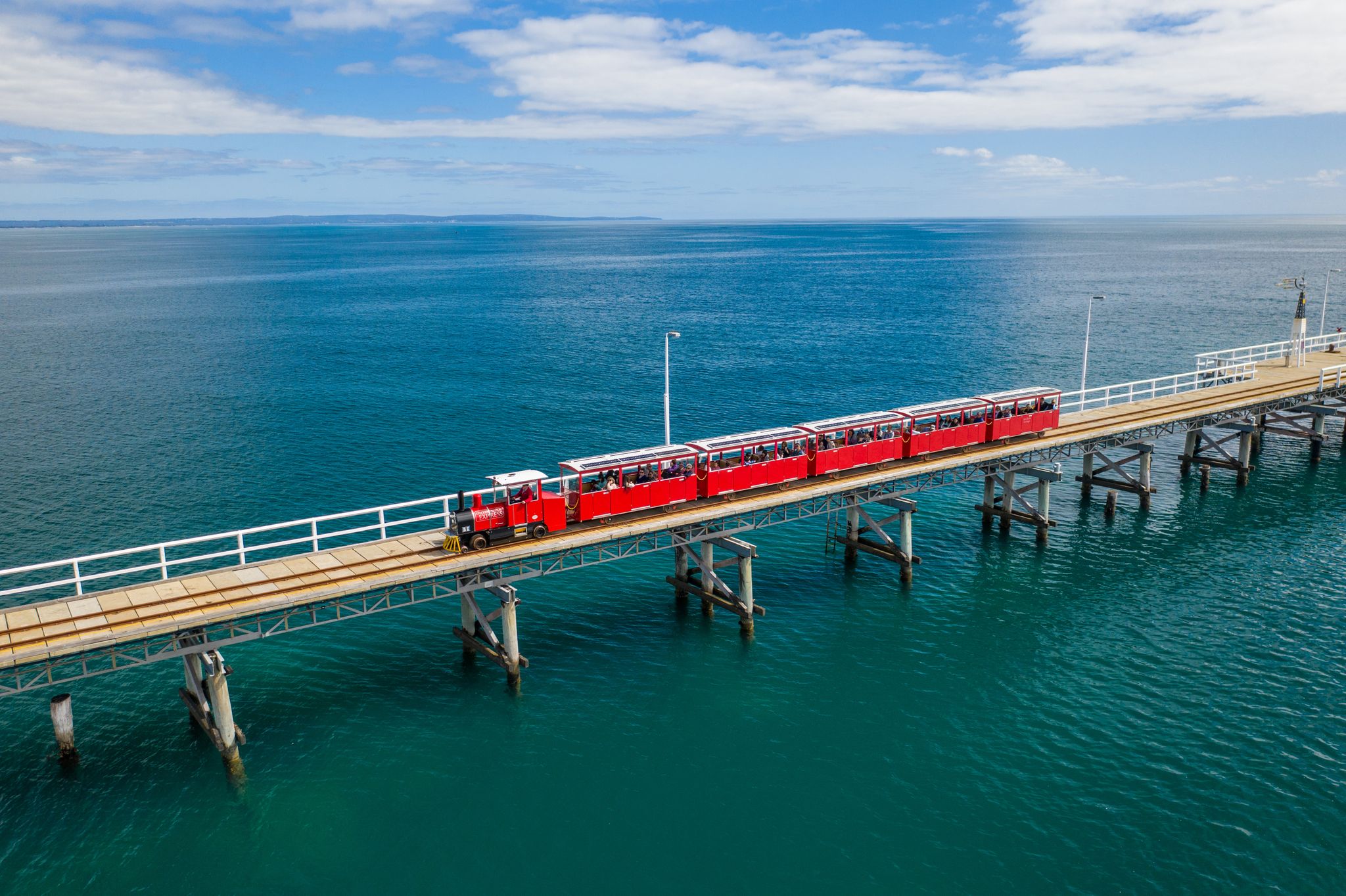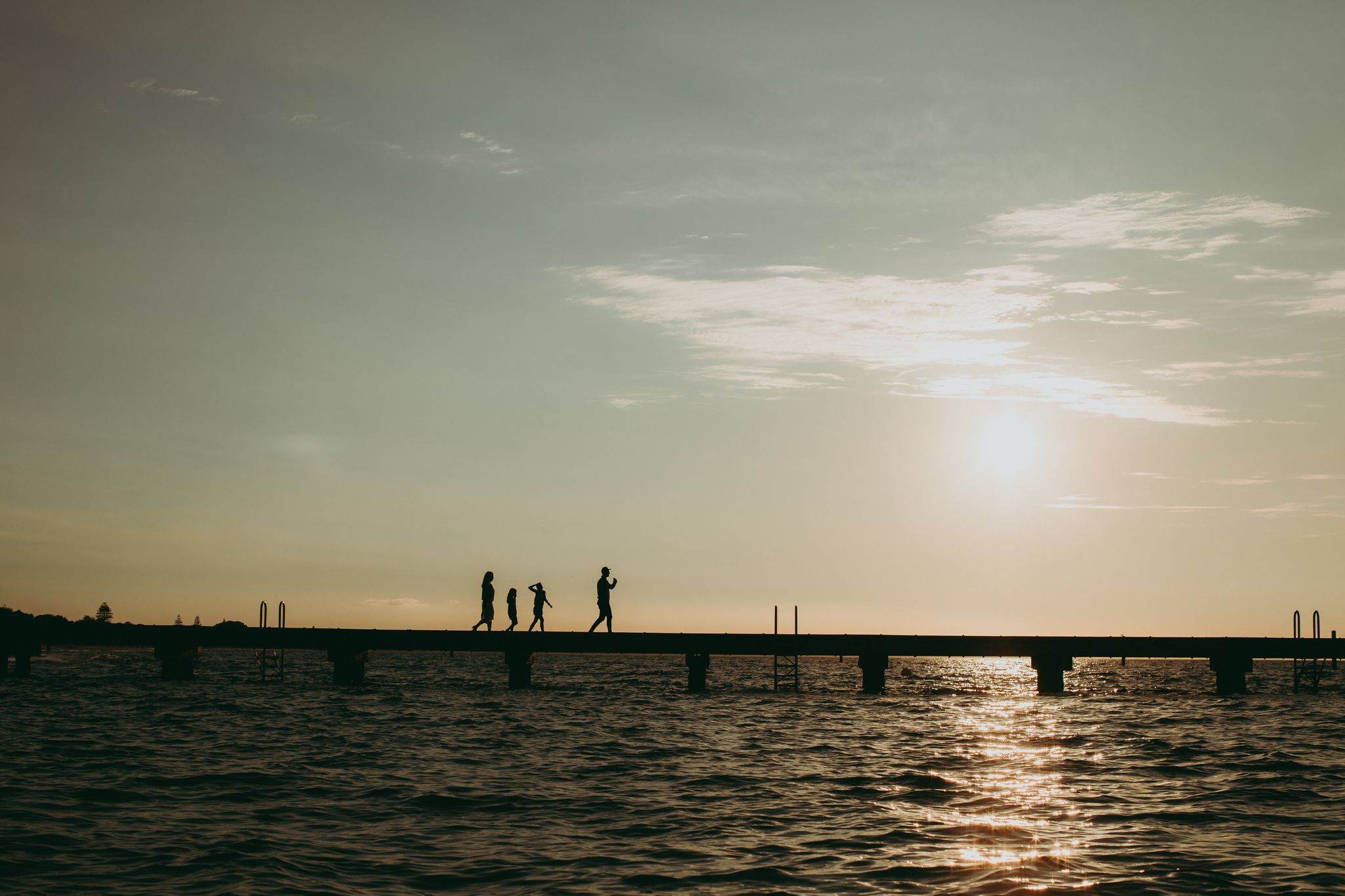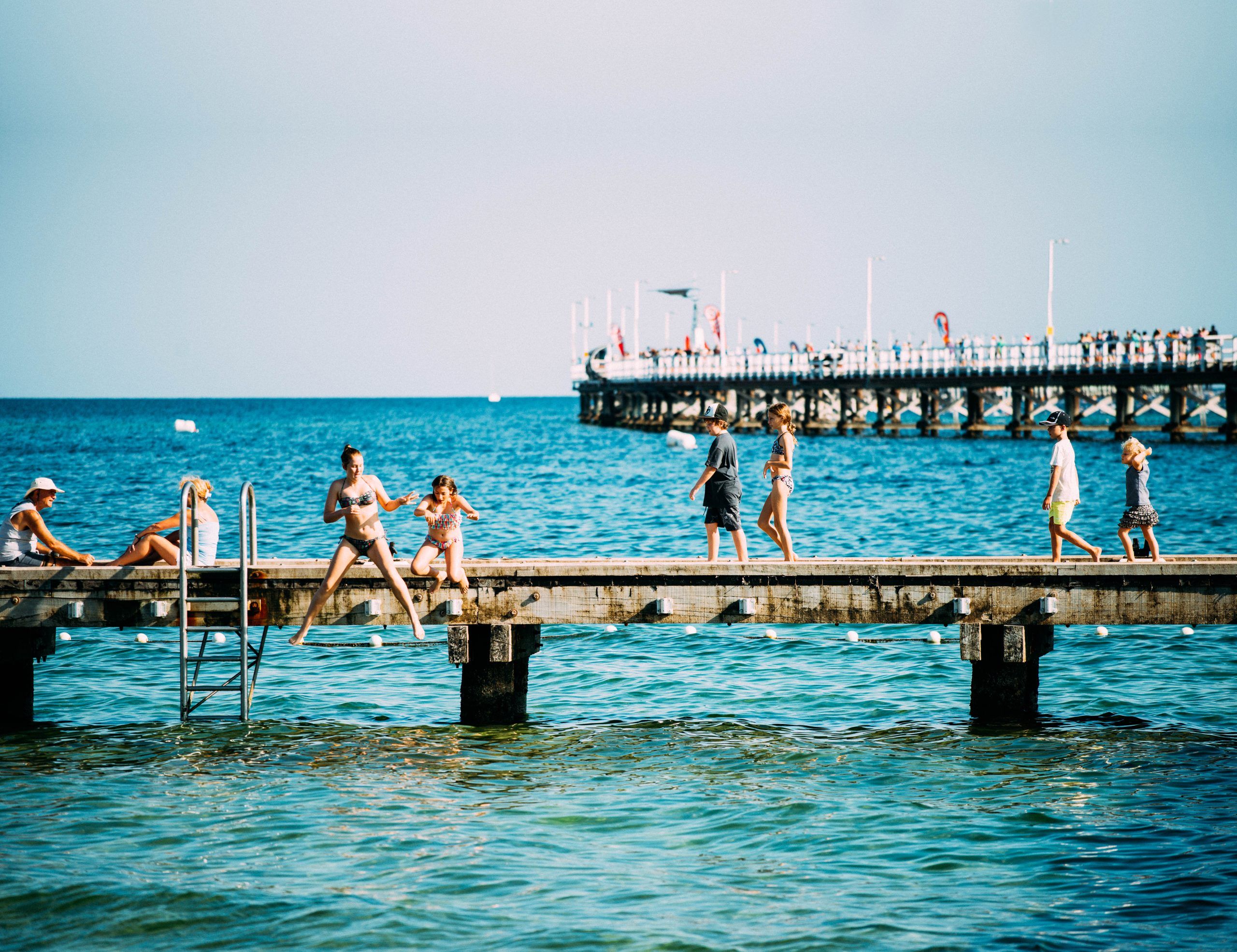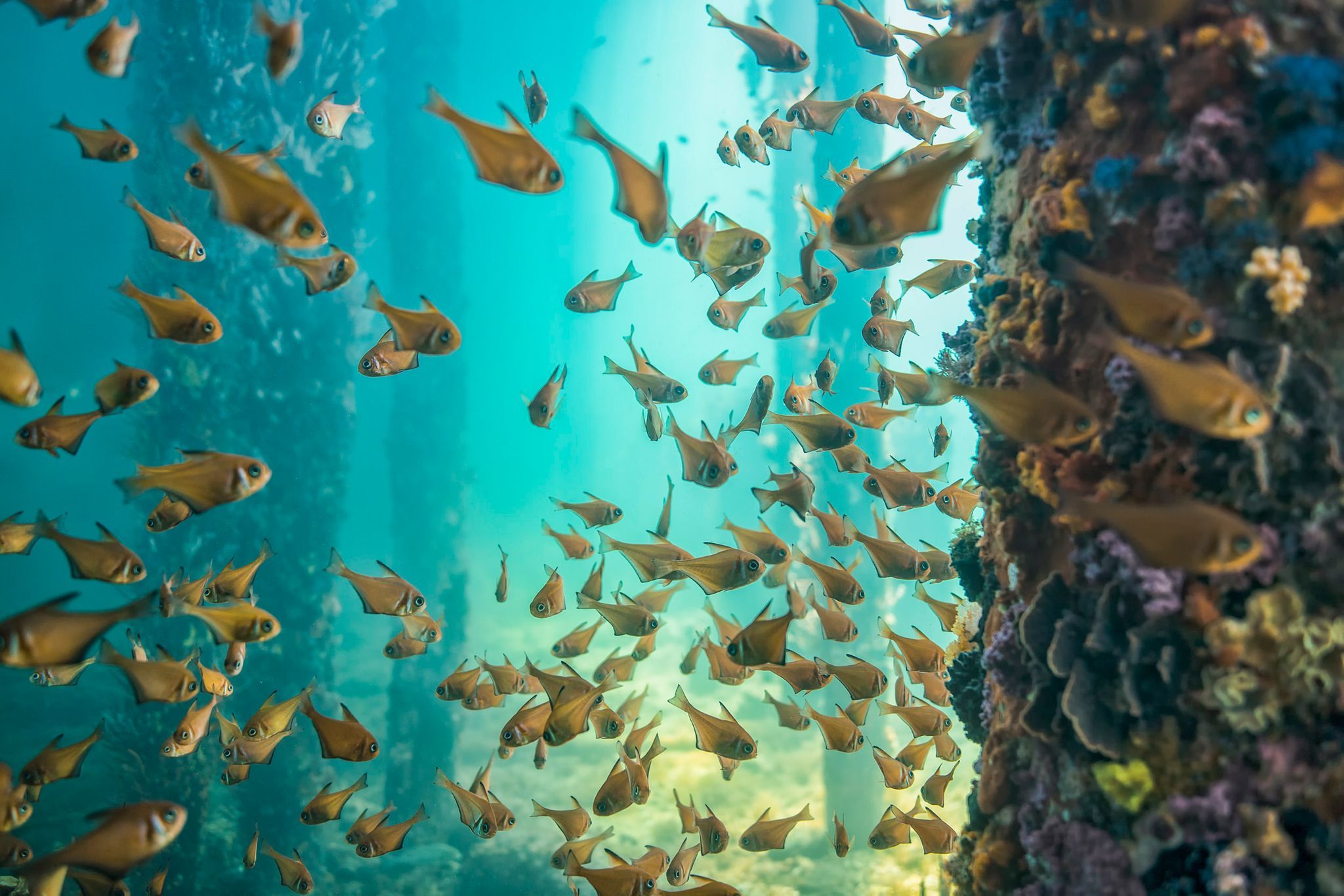What is it about a jetty that we love so much?
It’s the proximity it gives us to the water, a playground of exploration, and it’s the romance of the structure, its vastness, partly submerged in briny mystery, the weathering it endures. Old jetties are particularly alluring, steeped in history and the tales of communities well into the past.
Busselton’s picturesque Geographe Bay hosts the southern hemisphere’s longest timber piled jetty. Now at 1.84km long, the heritage listed beauty has been extended nine times since its initial build by Henry Yelverton, completed in 1865, when it measured “only” 176 metres in length. Adjustments since have been made to account for miscalculations, growing demand and to improve its integrity.
In its early years, the working jetty serviced exports and trade for industries of the region including crops of wheat, barley and oats, various livestock, whaling and the Quindalup timber mills. “The Tub”, a DIY lighthouse of sorts, was added in 1863 to guide the increasing traffic’s navigation needs. From there to today’s recreational jetty, of train tours, an underwater observatory and interpretive centre museum, many stories have unfolded.















